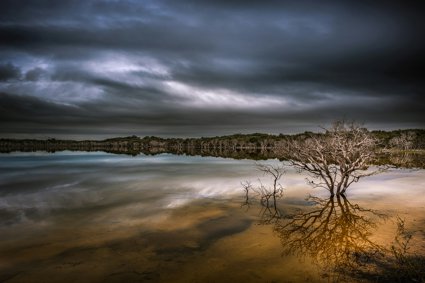
How do we tell stories about environmental risk?
Lesson aim
To understand environmental risk in your local landscape
Lesson objectives
-
To understand the ways that perception of risk is constructed
-
To identify how representation of risk is made through images, language and stories
-
To write your own stories of environmental risk
Starter
Climate fiction, or Cli-Fi, is a term coined by journalist Dan Bloom. These are fictional books that somehow or someway bring real climate change science to the reader. As a class, pupils should discuss what they think Cli-Fi means and provide examples they may have.
Pupils should then read the following article, taking notes that reflect on this new term, and how it is shaping understanding of environmental risk.
CliFi – A new way to talk about climate change (The Guardian, 2017).
Main activities
Many cultures have myths that explain or explore weather events. The ancient Greeks thought of their environment as alive: for example, the rivers, trees, and mountains were divine creatures with thoughts and emotions; some of them had once been human and had been transformed to become part of the landscape. The Greeks told stories about these entities to explain environmental risks: for example, they thought of the North Wind as a god called Boreas, who could wreck ships.
The main activity in the lesson is to encourage pupils to produce their own Cli-Fi stories about environmental risk. To introduce this activity, show pupils the animation: What is Environmental Risk?
Pupils should research and collect images and stories about environmental risk in their local landscape. Using these resources, they should write their own creative stories about environmental risk.
Questions to consider include:
-
How do people talk about landscape in your local area?
-
How are these risks presented?
-
What types of stories are told? For example, myths, newspapers, folklore.
If time permits, pupils should think more broadly - using global case studies - of images, stories and myths about landscape that shape environmental risk historically.
-
What do these materials suggest about the ways in which people thought about the landscape?
-
What risks are presented in these?
-
Are there similarities across different cultures?
These images could be made into a collage, or display, that show how environmental risk is constructed.
Plenary
Pupils should reflect on how fate, luck and fortune has shaped environmental risk. As a class discuss:
-
How is risk perception similar, or different, to Ancient Greek understanding of environmental change?
-
What do they think is the most important medium to shape understandings of environmental risk?
This second question could be as part of a class debate, with groups defending the role of images, film, stories or myths as their medium of communication.